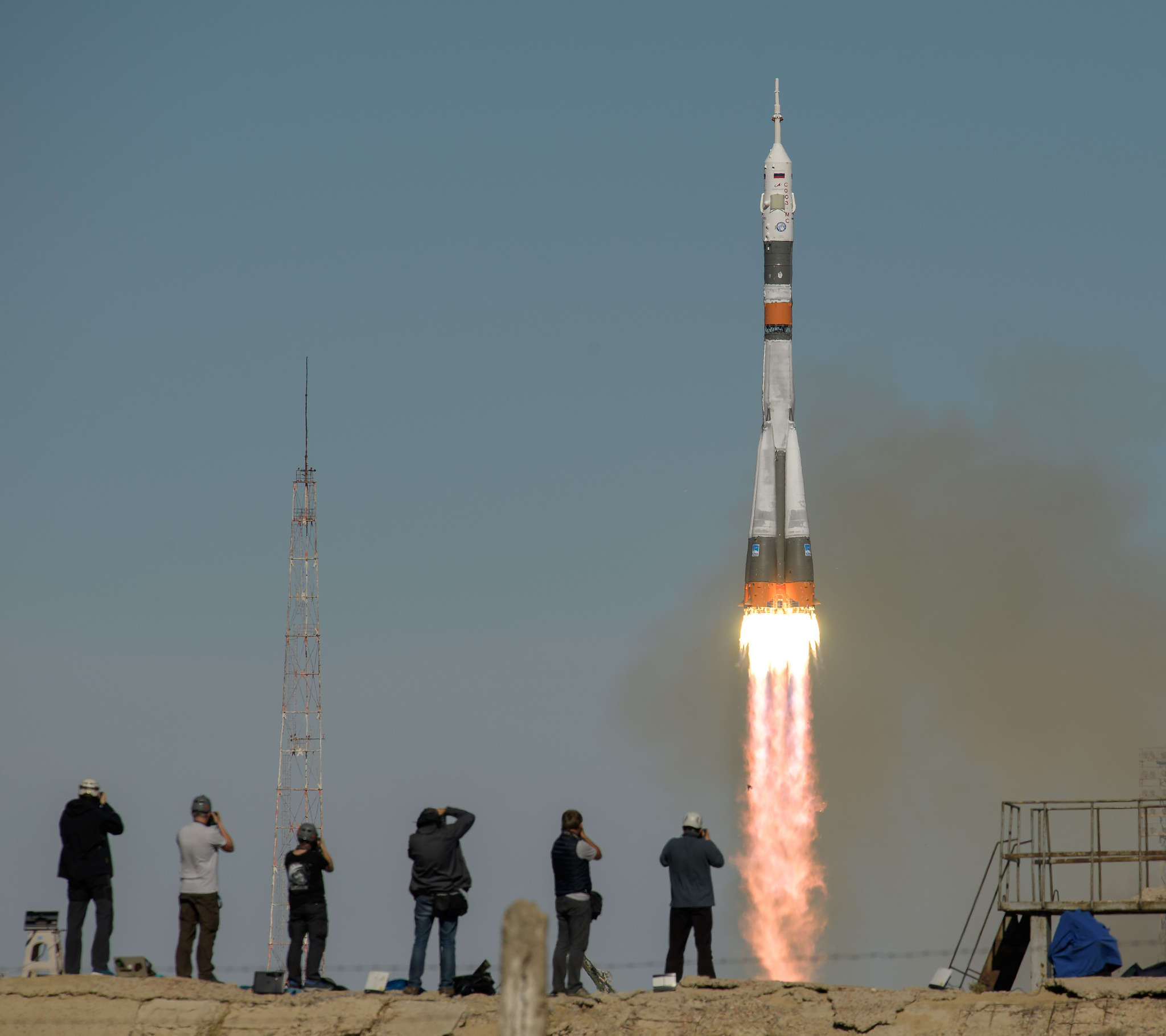Russian Rocket's Failure Reminds Us That Spaceflight Is Still Dangerous
Six decades into the space age, exploring the final frontier remains a difficult and dangerous proposition.
That basic truth was reinforced yesterday (Oct. 11) by the failure of a Russian Soyuz rocket during a crew launch toward the International Space Station (ISS).
The rocket experienced a serious anomaly a few minutes after liftoff, and the Soyuz MS-10 spacecraft carrying NASA astronaut Nick Hague and Russian cosmonaut Alexey Ovchinin made an emergency landing in Kazakhstan. Hague and Ovchinin are safe and in good condition, NASA officials said. [In Photos: The Harrowing Soyuz Launch Abort in Pictures]

There will be an investigation into the incident, to figure out what went wrong and how to prevent it from happening again. And because this is spaceflight, the list of potential problems is pretty long.
"We get lulled into a form of complacency when these things go off seemingly without a hitch on a regular basis," said John Logsdon, a professor emeritus of political science and international affairs at The George Washington University's Elliott School of International Affairs in Washington, D.C.
"But that's a result of extreme care, and that hasn't changed," Logsdon told Space.com. "This is not routine, and it requires diligence and focus throughout the process — manufacturing and launch readiness, launch preparation, and the actual conduct of the launch," Logsdon told Space.com. "It's still hard."
Get the Space.com Newsletter
Breaking space news, the latest updates on rocket launches, skywatching events and more!
The difficulty stems in large part from the inhospitable environment of space and the incredible energy required to accelerate vehicles to spaceflight speeds. To reach Earth orbit, for example, spacecraft must travel at least 17,500 mph (28,160 km/h). A seemingly minor issue can quickly escalate into a catastrophe if it allows that energy to escape or propagate in an uncontrolled manner.
Consider the two disasters suffered by NASA's space shuttle program during its 30 years of flight. On Jan. 28, 1986, unusually cold weather caused a rubber "O-ring" seal in one of the shuttle Challenger's solid rocket boosters to stiffen and fail. Hot gases escaped through the resulting breach, causing Challenger's huge external fuel tank to rupture. The shuttle broke apart just 73 seconds after liftoff, killing all seven crewmembers aboard.
On Feb. 1, 2003, the orbiter Columbia disintegrated upon re-entry to Earth's atmosphere, at the end of its mission. Hot gases invaded the left wing through a hole in the shuttle's heat shield, which had been punched by a piece of foam shed by the external fuel tank during liftoff two weeks earlier. Again, all seven crewmembers perished.
In both cases, investigators concluded that NASA's internal culture and decision-making processes were at least partially to blame. For example, the official inquiry into the Challenger tragedy, known as the Rogers Commission, determined that the managers who greenlit the liftoff that day were unaware of documented problems with the O-rings and the written recommendation of Morton-Thiokol, the company that built the solid rocket boosters. Morton-Thiokol advised against launching in such cold weather.
"If the decision makers had known all of the facts, it is highly unlikely that they would have decided to launch 51-L on Jan. 28, 1986," the Rogers Commission report stated, referring to the name of Challenger's mission.
NASA has taken these hard lessons to heart, stressed Kenny Todd, the agency's ISS operations integration manager. Plaques honoring both lost shuttle crews are prominently displayed in the room where NASA's ISS mission-management team meets, he said. [Space Travel: Danger at Every Phase (Infographic)]
"It's a very visual reminder," Todd said during a news conference yesterday after the Soyuz anomaly. "Every chance we get, we try to remind folks to not get 'go fever.'"
The two shuttle accidents aren't the only spaceflight tragedies. Soviet cosmonaut Vladimir Komarov died while returning to Earth on April 24, 1967, when the parachute of his Soyuz 1 spacecraft failed to deploy properly.
And Georgy Dobrovolsky, Vladislav Volkov, and Viktor Patsayev were lost on June 29, 1971, after wrapping up a three-week stay aboard the Soviet Union's Salyut 1 space station. A valve problem caused the cosmonauts' Soyuz 11 crew capsule to depressurize shortly before its re-entry to Earth's atmosphere.
Fatalities have also occurred during training runs and other tests. For example, on Jan. 27, 1967, Apollo 1 astronauts Gus Grissom, Ed White and Roger Chaffee died in a fire during a test designed to pave the way for the mission's planned Feb. 21 launch.
And on Oct. 31, 2014, Virgin Galactic's VSS Enterprise suborbital space plane broke apart during a rocket-powered test flight after its "feathering" re-entry system was deployed prematurely. Co-pilot Michael Alsbury was killed; pilot Peter Siebold was seriously injured but survived.
"This is a very difficult business that we're in, and it can absolutely humble you," Todd said. "And you just can't ever lose sight of that."
Mike Wall's book about the search for alien life, "Out There," will be published on Nov. 13 by Grand Central Publishing. Follow him on Twitter @michaeldwall. Follow us @Spacedotcom or Facebook. Originally published on Space.com.
Join our Space Forums to keep talking space on the latest missions, night sky and more! And if you have a news tip, correction or comment, let us know at: community@space.com.

Michael Wall is a Senior Space Writer with Space.com and joined the team in 2010. He primarily covers exoplanets, spaceflight and military space, but has been known to dabble in the space art beat. His book about the search for alien life, "Out There," was published on Nov. 13, 2018. Before becoming a science writer, Michael worked as a herpetologist and wildlife biologist. He has a Ph.D. in evolutionary biology from the University of Sydney, Australia, a bachelor's degree from the University of Arizona, and a graduate certificate in science writing from the University of California, Santa Cruz. To find out what his latest project is, you can follow Michael on Twitter.









